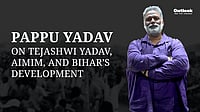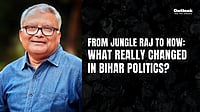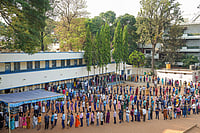Beyond the excitement Indian and Pakistani leaders generated through their meetings, there was one word you could hear everyone mutter: SAFTA, or South Asia Free Trade Area. What does the framework agreement on SAFTA, which was signed at the 12th SAARC summit, mean? Well, SAFTA is as much about bilateral economic ties as it is a regional trading arrangement. Pakistani Prime Minister Mir Zafarullah Jamali said it most clearly: "Politics cannot be divorced from economics. However, the imperatives of geo-economics can no longer be ignored," he declared at a press conference, underlining the "epochal dimensions" of SAFTA.
Jamali hinted at even bigger things to come: "I have discussed the gas pipeline with the (Indian) prime minister. The ball is in his court." Proposals for a gas pipeline linking Iran and Central Asia to India through Pakistan has long been hostage to the chill in bilateral relations. That appears to be changing. Pakistan has taken what appears to be a strategic decision on fostering better economic relations with India. President Pervez Musharraf said as much: "I feel SAFTA will facilitate bilateral relations that we are trying to promote."
For long, Pakistan had made a fetish of denying India the status of a Most Favoured Nation. It now wants to use SAFTA for a liberalised trading arrangement with India. "It is quasi-mfn," agrees a senior Indian official.
Considering the distrust between India and its neighbours (Nepal and even Sri Lanka), it's almost a miracle the SAFTA treaty was signed. Officials who midwifed the treaty credit Islamabad with demonstrating great political maturity in helping to make SAFTA a reality. Explains foreign secretary Shashank: "There was pressure to achieve results because the summit was happening in Islamabad."
The decade-old earlier arrangement, or South Asian Preferential Trade Agreement (SAPTA), wasn't a model for economic cooperation. It was at the 10th summit in Colombo, 1998, that a committee of experts was appointed to negotiate a framework agreement for SAFTA and have a draft ready by December 2001. The committee met once in 1999. Subsequently, the SAARC summit became irregular. When the summit was held in 2002, it was decided to have the framework ready by year-end. Thereafter, the committee met twice but couldn't finalise the core issue: a trade liberalisation programme and various concessions for Least Developed Countries (LDCs).
The committee met twice again, in October and November, 2003. With the date for the SAARC summit in Islamabad finalised, there surfaced a demand that the non-LDCs (India, Pakistan and Sri Lanka) should reduce tarrif to 0-5 per cent in three years. For Pakistan, it was a tough decision to take as its experience in free trade matched neither India's nor Sri Lanka's. It wanted five years to lower the tariff, but came around at the ministerial meeting in Islamabad.
There were other issues to sort out. The LDCs said sensitive lists (or list of goods which each country considers politically sensitive) of non-LDCs should not bar exports from LDCs; that no anti-dumping action should be taken against LDC exports; and that no safeguard action against any sudden surge of imports inimical to domestic industries should be initiated against LDC exports. The counter-measure is to impose tariffs for a fixed time so domestic industry can adjust.
Most countries found these demands unreasonable. When sensitive lists are prepared, ample care is taken of domestic sensitivities, for instance, in the agricultural sector. Intense negotiations led to an agreement that the sensitive lists of non-LDC nations with respect to LDCs can be shorter.
The next tricky step will come at the time each country prepares its sensitive list.There is likely to be hard bargaining over this. These lists, once agreed, will be reviewed every four years or as countries may decide. The negotiations and the operationalisation of these lists will provide the clearest indication whether the SAFTA agreement has met the same fate of most other SAARC documents—reams of paper with just academic value.
A God That Never Fails
The pact reveals the subcontinent's desire to put economics above mutual mistrust

A God That Never Fails
A God That Never Fails
Published At:
MOST POPULAR
WATCH
MORE FROM THE AUTHOR
PHOTOS
×




















